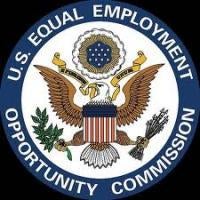Federal Agency Obtains Settlement for Hundreds of Workers Dismissed Due to Age
MINNEAPOLIS -- Global technology giant 3M (NYSE: MMM) has agreed to pay $3 million to a class of former employees and implement preventive measures to resolve a nationwide age discrimination lawsuit filed by the U.S. Equal Employment Opportunity Commission (EEOC), the agency announced today.
The EEOC’s suit charged that 3M unlawfully laid off hundreds of employees over the age of 45 during a series of reductions in force (RIFs) from July 1, 2003 through Dec. 31, 2006. 3M laid off many highly paid older employees, among others, apparently to save money and cut workers in salaried positions up to the level of director, the agency said. The EEOC also asserted that older employees were denied leadership training and laid off to make way for younger leaders. The agency’s investigation found an employee e-mail describing then-CEO Jim McNerney’s “vision for leadership development” as “we should be developing 30 year olds with General Manager potential” and “He wants us to tap into the youth as participants in the leadership development.”
Age discrimination violates the Age Discrimination in Employment Act (ADEA), which protects people aged 40 and older from employment discrimination. The EEOC filed both the lawsuit and proposed consent decree resolving the suit simultaneously in U.S. District Court for Minnesota. The investigation, led by EEOC Investigator Scott Doughtie, involved coordinated efforts by EEOC’s San Francisco, Chicago and New York offices.
Pending judicial approval, the consent decree provides that 3M will pay $3 million in monetary relief to approximately 290 former employees. In addition, 3M has agreed to implement a review process for termination decisions and training on how to prevent age bias. The company will also post openings for positions it had not advertised previously, to enable older employees to apply. 3M will report on its compliance, provide RIF information to the EEOC over the next three years, and post a notice about the settlement.
“The law requires employers to base employment decisions upon each person’s strengths and talents instead of relying upon generalized assumptions calculated around an employee’s age,” said Michael Baldonado, district director of the EEOC’s San Francisco office, which spearheaded the investigation.
EEOC San Francisco Regional Attorney William R. Tamayo said, “This consent decree is the result of productive and thoughtful negotiations with 3M. In addition to providing meaningful monetary relief for hundreds of former 3M employees, the settlement contains important preventive measures, including company policy changes and training designed to provide older people equal opportunities in the workplace.”
Tamayo noted that this case was developed cooperatively with the law firm of Sprenger + Lang of Washington, D.C., which earlier filed age discrimination suits covering additional issues against 3M in Minnesota state and federal courts. In the state court case, Whitaker et al. v. 3M, the parties filed a settlement agreement in March of this year, which is pending final court approval, on behalf of about 7,000 current and former employees. The federal case was filed on behalf of about 135 people, most of whom are ex-employees. The 290 ex-employees eligible for relief in the EEOC case are not eligible for relief under either of the private suits.
According to its website, 3M is a $27 billion diversified global technology company headquartered in St. Paul, Minn., and one of 30 companies that make up the Dow Jones Industrial Average.
The EEOC enforces federal laws prohibiting employment discrimination. Further information about the EEOC is available on its web site at www.eeoc.gov.




 />i
/>i
